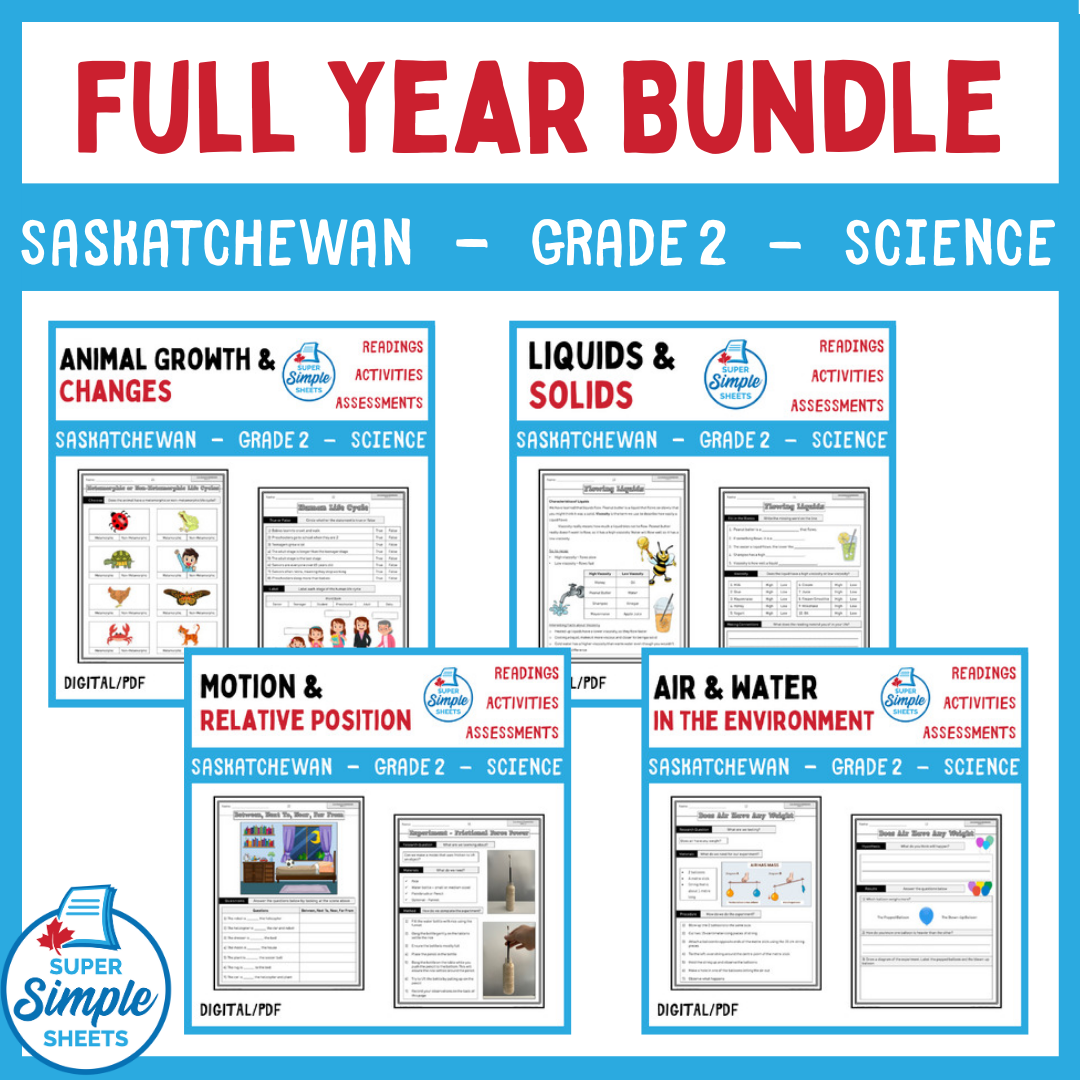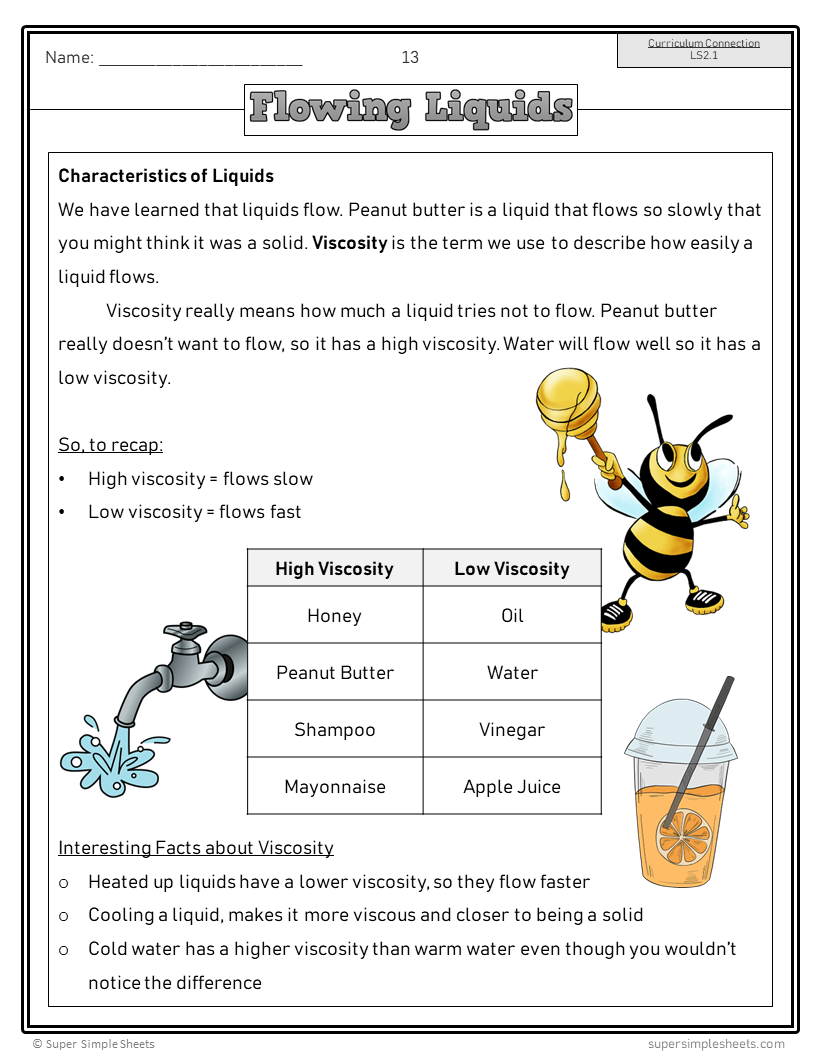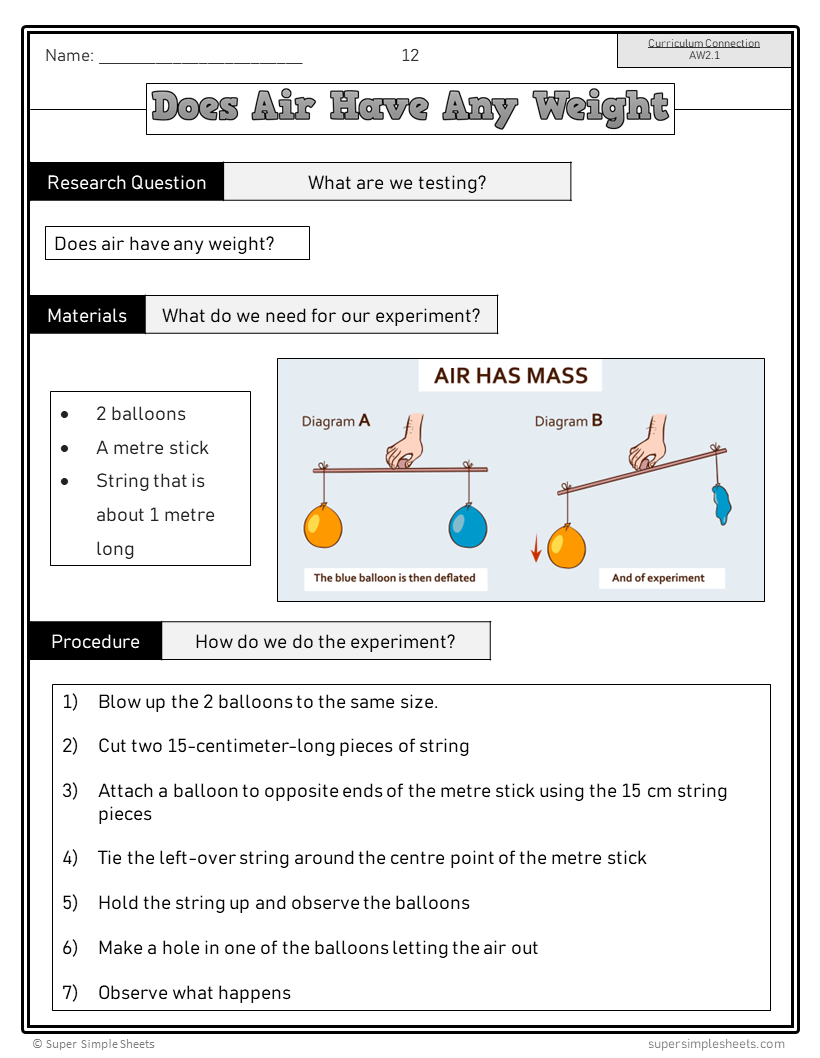Saskatchewan Grade 2 Science - Full Year Bundle - GOOGLE/PDF INCLUDED
Saskatchewan Grade 2 Science - Full Year Bundle - GOOGLE/PDF INCLUDED
Interested in a bundle? Shop below instead!
Couldn't load pickup availability
PRODUCT PREVIEW
Grade 2 – Saskatchewan Science Curriculum – This resource covers all outcomes and indicators in the Grade 2 - Saskatchewan Science Curriculum.
GOOGLE CLASSROOM VERSION - PDF INCLUDED! This gives you the ability to print worksheets as well as distribute a digital copy of the resource to your students on Google Classroom.
Check out each of the strands below to learn more about the resources included in this bundle.
Animal Growth and Changes
Some of the concepts that are covered:
- Humans – growth and changes in humans
- Humans - different growing rates
- Food is energy and it helps us grow
- Canada’s New Food Guide
- Sorting foods based on Canada’s New Food Guide
- Making a healthy food plan
- Food from our environment – from plants and animals
- Classifying animals – vertebrate and invertebrates
- Activity – making vertebrate and invertebrate animals using clay
- Metamorphic and non-metamorphic life cycles
- Life cycles of many different animals – mammals, amphibians, reptiles, birds, and fish
- Life cycle of humans
- Life cycles of invertebrate animals – worms, spiders, and insects
- Assignment – Making a life cycle book for an animal
- How animals age compared to humans
- Food needs of different animals
- How animals take care of their offspring
- How different animals move – slither, swim, jump, crawl, galop
- How animals adapt to live in their environment – hibernation and migration patterns
- Experiment – making a paper airplane
- Changing animals – how animals look like their offspring
- Names of baby animals
- Humans fighting for animal rights (PETA)
- How to help animals – poster assignment
- Where animals live – environments they thrive in
- Activity – which environment would _____ animal live in?
- Activity – which animals would live in this environment
- Natural versus human-made environments (zoo, cave, dog or bird house, nest)
- Unit Test
- Answer pages for all activities
Liquids and Solids
Some of the concepts that are covered:
- What is matter?
- All about liquids and solids
- Freezing point of liquids
- Freezing rain – dangers
- Natural vs human made solids
- Characteristics of solids and liquids
- Describing the physical characteristics of liquids – flow, colour, texture, smell, transparency
- Activity – testing the characteristics of common liquids
- Physical characteristics of solids – strength, colour, texture, shape, buoyancy, transparency
- Activity – describing the characteristics of common solids
- Scavenger hunt – finding solids with certain characteristics (ex. red solids, buoyant solids)
- Melting point of solids
- Lab experiment – melting
- Water – how it changes states
- Flow of liquids – testing the viscosity of liquids (experiment)
- Experiment – gelatin (liquid changing states)
- Classify - solids vs liquids
- Strong solids
- Combining liquids and solids – mixtures
- Dissolving solids in liquids
- Experiment – dissolving process
- Different mixtures – solid/solid, solid/liquid, liquid/liquid
- Sink or float
- Buoyancy in water – experiment
- Buoyancy of different fluids
- Experiment – making a tin-foil boat
- Solids that absorb or repel liquids
- Experiment – testing whether solids repel or absorb water
- Symbols that keep us safe
- Toxic waste
- Medicine – types and disposal
- Unit test
- Answer pages for all activities
Motion and Relative Position
Some of the concepts that are covered:
- Relative positioning
- Describing the position of objects in reference to themselves and other objects
- Describing position using key terms – above, below, next to, beside, between, right, left, in front, behind, etc.
- Explain how an object was moved using key terms
- Describe the objects around you and then turn around and describe them again
- Using non-standard units of measurement to describe relative location (steps)
- Assignment – creating a treasure map with directions
- Describe the motion of various objects – spinning, bouncing, jumping, rolling, swinging
- Natural motion versus human-made motion
- Forces – push and pull forces
- Pulling force – gravity
- Experiment – the pulling force of gravity causing motion
- Force that resists motion – friction
- Experiment – The friction car ramp
- Why we need friction – rubber shoes
- Testing the friction of different surfaces
- Experiment – friction of rice and a pencil
- Using inclined planes to make motion easier
- Experiment – the motion of a toy car down a ramp
- Calculating the mechanical advantage of an inclined plane
- Various uses of inclined planes at home and at school
- Wheels and axles – reading and questions
- Investigation – a toy car’s wheels and axles
- Clockwise and counterclockwise wheel motion
- How humans use wheels and axles to make life easier
- Activity – building 3 different cars using different wheels and axles
- Unit test
- Answer pages for all activities
Air and Water in the Environment
Some of the concepts that are covered:
- What is air?
- Properties of air
- Evidence of air around us – finding proof air exists
- Experiment – Air has mass/weight
- Experiment – is air everywhere?
- Experiment – air pressure and moving air (wind)
- Air on the move – helping plants and using wind as energy
- Fire and air – fire needs oxygen
- Activity - Measuring air temperature
- Research – Look up the local weather report
- Activity – making a pinwheel to measure wind speed
- How living things need air
- Properties of water
- Different sources of water – lakes, rivers, streams, oceans, ponds
- Water in natural and built environments
- Evaporation – reading and experiment
- Condensation – reading and experiment
- The water cycle – reading and activities
- Three states of water – water, ice, vapour
- How heat changes the states of water
- All living things need water
- How we get water into people’s homes
- Water transportation – cargo ships
- Water recreation – how humans enjoy water
- Water power – hydroelectricity
- Water pollution – human activities affecting water quality
- Wasting water – personal survey
- Making a plan to conserve water
- Freshwater around the world – availability (limited wells in Africa)
- Importance of water to Indigenous groups
- Air and water pollution assignment – designing a poster
- Unit test
- Answer pages for all activities
This is a comprehensive bundle that will save you hours of planning! It has been tested and found effective in helping students achieve the learning outcomes in the science curriculum.
Answer pages for all slides/sheets are included!
Share













